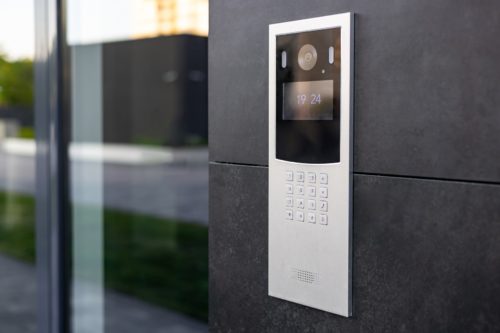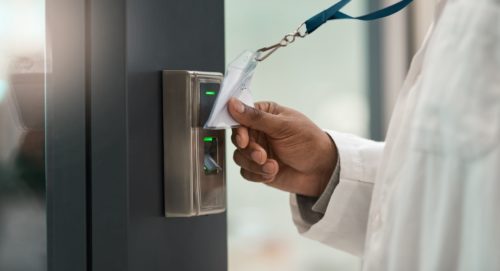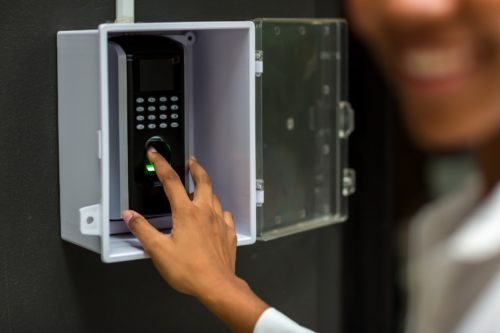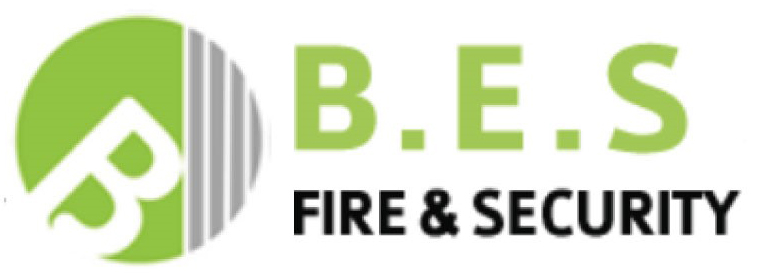Access control systems have become a fundamental part of modern business security strategies, providing a reliable way to manage who can enter specific areas within a facility.
At the heart of these systems is the access control panel, the central component responsible for processing access requests and ensuring that only authorised individuals can gain entry.
Access control panels serve as the brain of your security system. They seamlessly coordinate various elements such as locks, card readers, and biometric scanners to maintain the security of your premises.
BES Security is a trusted provider of advanced access control solutions, offering tailored systems that meet the unique needs of businesses of all sizes.
This guide will explore the essentials of access control panels, from their basic functionality to the benefits they offer.

What Is an Access Control Panel?
An access control panel is the central hub of an access control system. It’s responsible for managing and regulating who can enter different areas of a building. Essentially, it acts as the system’s command centre, processing access requests through various entry points like doors, gates, or turnstiles.
When a user presents a credential—such as a keycard, fob, or biometric data—the access control panel verifies the credential against its database and decides whether to grant or deny access based on pre-set permissions.
The access control panel is critical because it ensures that only those with the proper authorisation can access certain areas. This means sensitive information, equipment, and personnel are better protected. By centralising the management of access points, businesses can maintain a secure environment with flexibility in how access is granted.
Key Components of a Control Panel System
The functionality of an access control panel relies on several key components that work together. These components include the processor, memory, input/output connections, and power supply.
Processor
The processor is the brain of the control panel, responsible for executing commands, processing data, and managing communication between elements. It ensures that access requests are processed quickly and accurately, minimising delays and security risks.
Memory
The memory in an access control panel stores crucial data, including access permissions, user credentials, and event logs. This information is essential for the system to function, allowing it to verify requests and maintain a record of activity.
Input/Output Connections
These connections link the control panel to other components, such as card readers, door locks, and alarm systems. Input connections receive signals from devices like keypads or scanners. Output connections send commands to unlock doors or trigger alarms.
Power Supply
A reliable power supply is vital for keeping the access control panel and security system operational at all times. Many systems include backup power options, such as batteries, to ensure continuous operation during power outages, preventing potential security breaches.
Each of these components plays a crucial role in the overall functionality of the access control panel. They keep the system robust, responsive, and secure. A well-designed control panel integrates these elements seamlessly, providing a scalable solution that can adapt to evolving business needs.
How Does an Access Control Panel Work?
An access control panel functions as the central hub that governs who can enter/exit specific areas within a building. The process begins when an individual interacts with an access control device, such as a card reader, keypad, or biometric scanner, positioned at the entry point.
The panel receives input from these devices, which typically involves the presentation of a credential like a keycard, entering a code, or providing a fingerprint.
Once the panel receives this input, it quickly processes the information by comparing it against a stored database of authorised credentials. The access control panel checks whether the credential presented matches the permissions assigned to that user for that specific time and location.
If the credentials are valid, the panel sends a command to the corresponding door lock, allowing entry. If the credentials are not recognised or are outside of permitted access times, the panel denies access. This can also trigger an alarm or notify security personnel.
Beyond simply unlocking doors, the access control panel also communicates with other security systems. For example, if unauthorised access is attempted, the panel can activate alarms, notify security staff, or even lock down additional areas to contain the threat.
This capability ensures that all elements of the security system work in concert to protect the premises effectively.
Integration with Other Security Systems
Access control panels can be integrated with a range of other security systems, creating a unified and robust security network.
When connected to CCTV cameras, for instance, the access control system can automatically direct cameras to focus on an entry point whenever access is attempted, providing real-time video footage that can be crucial for monitoring and investigations.
Integration with intruder alarms allows the access control panel to enhance building security further. If an access control breach occurs, the panel can trigger alarms, alerting security personnel and potentially activating lockdown procedures to prevent unauthorised movement throughout the building.
Similarly, when integrated with fire alarm systems, access control panels can play a vital role in emergency response.
In the event of a fire, the panel can automatically unlock all doors to facilitate safe and rapid evacuation, while simultaneously ensuring that security is maintained in other parts of the building where necessary.
Seamless communication between these systems is essential to ensure a coordinated and effective security response. By integrating access control panels with other security measures, businesses can achieve a higher level of protection, ensuring that all systems work together to safeguard the premises comprehensively.
Types of Access Control Panels
Standalone Access Control Panels
Standalone access control panels are designed to control access to a single door or a small number of doors without the need for a networked connection. These systems are typically used in smaller businesses or locations where security requirements are less complex. The panel, reader, and locking mechanism are all contained within one unit, making it a simple and cost-effective solution for managing access.
The primary advantage of standalone systems is their ease of installation and use. They do not require a network connection or extensive infrastructure, making them ideal for businesses looking for a straightforward security solution.
However, standalone systems have limitations, particularly when it comes to scalability and centralised management. Since each panel operates independently, managing multiple doors or expanding the system across larger premises can be challenging and less efficient.
Networked Access Control Panels
Networked access control panels are designed for larger, more complex environments where multiple doors and areas need to be managed. Unlike standalone panels, networked systems are connected to a central server, allowing for centralised control and monitoring of all access points across the facility.
This connectivity enables administrators to manage user credentials, set access permissions, and monitor activity from a single interface, regardless of the size of the building or the number of access points.
The benefits of networked systems are numerous. They offer greater flexibility and scalability, making it easy to add new doors or expand the system as the business grows.
Centralised management also simplifies the process of updating permissions or responding to security incidents, ensuring that security policies are consistently applied across the entire premises.
Additionally, networked panels can integrate with other security systems, providing a comprehensive security solution that can adapt to the evolving needs of a business.
Access Control Panel Options for Businesses
Proximity Fob or Card Access Control Panels
Proximity fob or card access control panels are among the most popular access control solutions for businesses of all sizes.
These systems operate using radio frequency identification (RFID) technology, where users present a fob or card to a reader located near an entry point. The reader communicates with the access control panel, which checks the credentials against a stored database. If the credentials are valid, the door unlocks, allowing the user to enter.
These systems are favoured for their ease of use and flexibility. Employees can easily carry a fob or card, which can be quickly scanned to gain access. Additionally, businesses can assign different access levels to each card or fob, ensuring that employees only have access to areas relevant to their roles.
One of the key benefits of proximity fob or card systems is the ability to monitor and log access events. This feature allows businesses to track who accessed specific areas and when, providing valuable data for audits and incident investigations.

Biometric Access Control Panels
Biometric access control panels offer an advanced level of security by using unique physical characteristics, such as fingerprints, facial recognition, or iris scans, to grant access.
These systems are particularly suited for high-security environments where protecting sensitive information or assets is critical.
Because biometric data is unique to each individual, these systems virtually eliminate the risk of unauthorised access through stolen or duplicated credentials.
The enhanced security provided by biometric systems makes them ideal for businesses handling sensitive data, such as financial institutions, research labs, or government facilities.
Biometric access control panels also reduce the need for physical credentials, such as cards or fobs, further minimising the risk of lost or stolen access tools. While biometric systems tend to be more expensive upfront, their long-term security benefits make them a worthwhile investment for businesses requiring the highest level of protection.

Keypad Access Control Panels
Keypad access control panels are a straightforward and economical option for businesses, particularly smaller ones with less complex security needs. These systems require users to enter a numeric code on a keypad to gain access. Once the code is entered, the panel verifies it against its database, and if correct, the door unlocks.
One of the primary advantages of keypad systems is their flexibility. Businesses can easily program and change access codes as needed, making it simple to manage different users or areas.
This feature is particularly useful for businesses that need to update access permissions frequently or want to provide temporary access to visitors or contractors.
While keypad systems may not offer the same level of security as biometric or proximity fob/card systems, they are a cost-effective solution that provides reliable access control for many business environments.

Benefits of Using an Access Control Panel
Enhanced Security and Monitoring
Access control panels significantly enhance business security by ensuring that only authorised personnel can access specific areas. By centralising control over entry points, these systems reduce the risk of unauthorised access and help prevent security breaches.
The ability to set different access levels for various users adds an additional layer of security, ensuring that sensitive areas are only accessible to those with the necessary clearance.
Access control panels also provide valuable monitoring capabilities. Each access attempt is logged, creating a detailed record of who entered specific areas and when. This information is crucial for auditing access patterns, investigating security incidents, and maintaining overall security management.
By providing real-time data on access events, these systems enable businesses to respond swiftly to potential security threats.
Cost-Effective and Scalable Solutions
Using access control panels can lead to significant long-term cost savings. Traditional keys can be lost, resulting in costly rekeying of locks, whereas fobs can be reprogrammed easily.
If an employee loses a fob or forgets a code, the system can simply revoke access to that credential and issue a new one.
Access control panels are also highly scalable, making them an ideal solution for growing businesses. As your company expands, additional doors and access points can be easily integrated into the existing system. This scalability ensures that your security system can grow alongside your business, providing consistent protection as your needs evolve.
Integration with Existing Security Infrastructure
Control panels can integrate seamlessly with other security systems, such as CCTV cameras and intruder alarms. When combined with these systems, access control panels create a more comprehensive and robust security solution.
For example, when someone accesses a door using an access control panel, nearby CCTV cameras can be programmed to start recording, providing visual documentation of the event. Similarly, if an unauthorised access attempt is detected, the system can trigger alarms or alert personnel, ensuring a swift response. This integration not only enhances security but also simplifies the management of various security systems, allowing businesses to monitor and control all aspects of their security from a single platform.
Access Control Panel FAQs
What is an access control panel?
An access control panel is the central component of an access control system. It manages and regulates who can enter and exit specific areas within a building. It acts as the system’s brain, processing access requests from various input devices, such as card readers, keypads, and biometric scanners, and making decisions about granting or denying access based on pre-set permissions.
The access control panel ensures that only authorised individuals are allowed entry, thereby enhancing the security of a business premises.
How does an access control panel work?
An access control panel operates by receiving input from access devices like proximity fobs, keycards, keypads, or biometric scanners. When a user presents their credential, the panel checks it against a database of authorised users.
If the credential is valid and within the allowed access times, the panel unlocks the door or gate. If the credential is invalid, the panel denies access and may trigger an alarm or notify security personnel. The panel also logs each access attempt, providing a record that can be reviewed for security purposes.
Can an access control panel be integrated with other security systems?
Yes, access control panels can be integrated with other security systems such as CCTV cameras, intruder alarms, and fire systems. This integration allows for a more comprehensive security solution.
For example, when an access control panel grants access, it can trigger nearby CCTV cameras to record the event. Or if unauthorised access is attempted, it can activate alarms or notify security personnel. Integration ensures that all security systems work together seamlessly, providing a coordinated and effective response to any security incident.
How do I choose the right access control panel for my business?
Choosing the right access control panel depends on factors including the size of your business, your security needs, and budget. For smaller businesses with fewer access points, a standalone or keypad system may be sufficient.
Larger businesses or those with multiple locations may benefit from a networked system with centralised management of all access points. If your business requires a high level of security e.g. handling sensitive information, biometric panels may be the best option. It’s also important to consider future growth, ensuring that the system you choose can scale with your business.
What maintenance is required for access control panels?
Regular maintenance is crucial to keep access control panels functioning optimally. This includes periodic software updates to ensure the system is protected against the latest security threats, as well as physical checks of the hardware components, such as readers and door locks, to ensure they are working correctly.
It’s also important to review and update access permissions regularly to reflect any changes in personnel or security policies. Scheduled maintenance not only helps prevent system failures but also extends the lifespan of the access control system. This means it continues to protect your business effectively.


